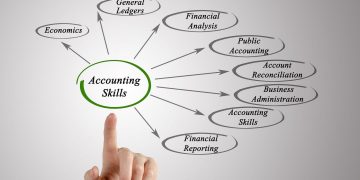How Physiotherapy Can Help Relieve Pain from Stroke-Related Paralysis
A stroke can have a significant impact on an individual’s life, leading to a wide range of physical challenges, including paralysis on one side of the body. Stroke-related paralysis, often referred to as hemiplegia, can cause not only loss of mobility but also considerable pain and discomfort. This pain can arise from muscle weakness, spasticity (muscle tightness), joint immobility, and poor posture. However, physiotherapy for paralysis plays a vital role in managing stroke-related pain and improving the quality of life for stroke survivors. Through targeted exercises and therapeutic techniques, physiotherapy helps alleviate pain, restore movement, and enhance overall recovery.
In this article, we will explore how physiotherapy helps relieve pain associated with stroke paralysis, focusing on key treatment methods and the overall benefits of rehabilitation.
1. Understanding Stroke-Related Paralysis and Pain
After a stroke, the brain’s ability to send signals to the muscles may be impaired, leading to paralysis on one side of the body. This can result in a loss of muscle control, weakened muscles, and diminished mobility. In many cases, individuals also experience pain due to the loss of muscle function and the development of abnormal postures or muscle contractions.
There are two main types of pain that stroke survivors often experience:
- Neuropathic Pain: This type of pain occurs when the nerves themselves are damaged by the stroke. It can cause sensations of burning, tingling, or shooting pain, often in the paralyzed limbs.
- Musculoskeletal Pain: This occurs due to muscle weakness, joint stiffness, or poor posture caused by paralysis. Over time, poor posture and immobility can cause the joints and muscles to stiffen, leading to discomfort and pain.
2. How Physiotherapy Relieves Pain from Stroke Paralysis
Physiotherapy plays a crucial role in stroke pain relief by addressing the root causes of pain. Through a combination of movement therapy, stretching exercises, and muscle relaxation techniques, physiotherapists can help reduce both musculoskeletal and neuropathic pain, while also improving the patient’s range of motion and mobility.
A. Spasticity Management
Spasticity, or muscle tightness, is a common symptom for individuals with stroke paralysis. It can lead to pain, stiffness, and difficulty moving the affected limbs. Physiotherapists use several techniques to help manage spasticity and reduce pain:
- Stretching Exercises: Physiotherapists often guide stroke survivors through gentle stretching exercises to lengthen tight muscles and improve flexibility. Stretching helps alleviate muscle stiffness and prevent contractures (muscle shortening), which can cause pain and further loss of movement.
- Positioning Techniques: Proper positioning of the body, especially during rest or sleep, can prevent excessive muscle tightness. Physiotherapists teach stroke survivors how to position their limbs in a way that minimizes strain and promotes muscle relaxation.
- Heat and Cold Therapy: Heat packs or cold compresses can be applied to affected muscles to help reduce spasticity and manage pain. Heat relaxes tight muscles, while cold can reduce inflammation and numb painful areas.
B. Strengthening and Mobility Exercises
Weak muscles often contribute to pain and discomfort in stroke survivors. By focusing on strengthening the weakened muscles, physiotherapy helps reduce pain caused by muscle fatigue or instability.
- Strengthening Exercises: Targeted exercises are designed to strengthen the muscles affected by paralysis. Strengthening the surrounding muscles can help provide better support for the joints, reducing the strain and pain on the body. Exercises like leg raises, knee extensions, and resistance band workouts help improve muscle tone and support proper movement.
- Gait Training: For individuals who have difficulty walking due to stroke-related paralysis, gait training is an important aspect of physiotherapy. Walking training helps to restore mobility while improving coordination and balance, reducing the discomfort and pain caused by poor posture or difficulty moving.
C. Improving Posture and Alignment
Postural problems are common in individuals with stroke paralysis. Poor posture, often caused by the weakness of the muscles on one side of the body, can result in muscle strain, joint pain, and additional discomfort. Physiotherapists help patients develop correct posture to reduce pain and improve overall function.
- Posture Correction: Physiotherapists teach proper body alignment to prevent further strain on muscles and joints. This is especially important during daily activities like sitting, standing, and walking. By improving posture, individuals can alleviate musculoskeletal pain and reduce the risk of developing secondary pain conditions.
D. Neuropathic Pain Management
For stroke survivors experiencing neuropathic pain, physiotherapists can offer treatments to help reduce pain and promote recovery.
- Desensitization Exercises: These exercises involve gentle tactile stimulation, which helps reduce hypersensitivity in the affected limbs. Over time, this can help the body become less sensitive to pain.
- Transcutaneous Electrical Nerve Stimulation (TENS): TENS is a technique that uses low-voltage electrical currents to stimulate nerves and reduce pain. This therapy can help alleviate neuropathic pain and provide relief to stroke survivors dealing with nerve damage.
3. Psychological and Emotional Benefits of Physiotherapy
Pain after a stroke is not only physical but also psychological. The frustration of not being able to move as freely as before or the inability to perform daily tasks can lead to feelings of depression, anxiety, and stress. Physiotherapy for paralysis has psychological benefits as well, helping to boost mental health and promote a positive outlook on recovery.
- Increased Confidence: As patients experience progress in their rehabilitation, such as reduced pain and increased mobility, they gain confidence in their abilities. This psychological boost can help reduce stress and anxiety and improve overall mental well-being.
- Sense of Achievement: Regular physiotherapy sessions provide individuals with measurable goals and tangible improvements. Accomplishing these goals can create a sense of achievement, fostering motivation and hope throughout the recovery process.
4. The Role of Family in Stroke Rehabilitation
Stroke rehabilitation is not just about the patient; the family plays a key role in supporting physiotherapy efforts. Family members can assist with exercises, help monitor progress, and provide encouragement during challenging times.
Conclusion
Physiotherapy for stroke paralysis is essential for managing pain, improving movement, and enhancing recovery outcomes. Through a combination of spasticity management, strengthening exercises, postural correction, and neuropathic pain treatments, physiotherapy can significantly reduce the discomfort caused by stroke-related paralysis. Additionally, the mental health benefits of physiotherapy—such as increased confidence and a sense of accomplishment—can greatly improve the overall well-being of stroke survivors. If you or a loved one is experiencing pain from stroke-related paralysis, physiotherapy and rehabilitation after a stroke can be a vital tool in alleviating discomfort and restoring function, helping individuals regain a better quality of life. In the hospices it is important to have a doctor orthopedist or physiotherapist.














